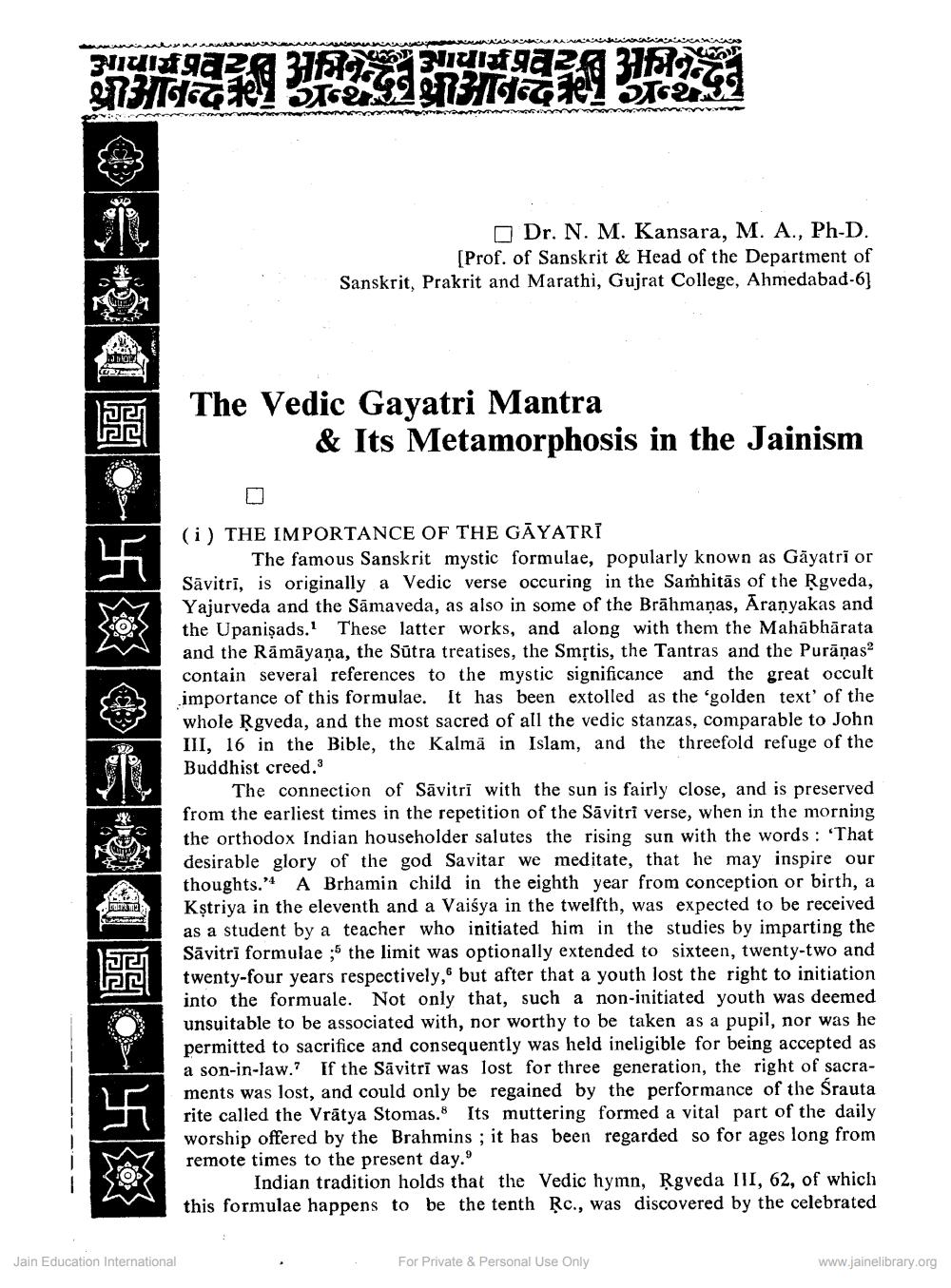________________
L
AAAAAABAANAAAAAAAAAAAAAAAAAAAAAAAAAAAAAAAAA
TAVN V
YMMVN
O Dr. N. M. Kansara, M. A., Ph.D.
[Prof. of Sanskrit & Head of the Department of Sanskrit, Prakrit and Marathi, Gujrat College, Ahmedabad-6]
The Vedic Gayatri Mantra
& Its Metamorphosis in the Jainism
(i) THE IMPORTANCE OF THE GĀYATRI
The famous Sanskrit mystic formulae, popularly known as Gāyatri or Sāvitrī, is originally a Vedic verse occuring in the Samhitās of the Rgveda, Yajurveda and the Sāmaveda, as also in some of the Brāhmaṇas, Āranyakas and the Upanişads. These latter works, and along with them the Mahābhārata and the Rāmāyaṇa, the Sutra treatises, the Smộtis, the Tantras and the Purāņas contain several references to the mystic significance and the great occult importance of this formulae. It has been extolled as the 'golden text' of the whole Rgveda, and the most sacred of all the vedic stanzas, comparable to John III, 16 in the Bible, the Kalmā in Islam, and the threefold refuge of the Buddhist creed.?
The connection of Sāvitri with the sun is fairly close, and is preserved from the earliest times in the repetition of the Sāvitri verse, when in the morning the orthodox Indian householder salutes the rising sun with the words : 'That desirable glory of the god Savitar we meditate, that he may inspire our thoughts.94 A Brhamin child in the eighth year from conception or birth, a Kștriya in the eleventh and a Vaiśya in the twelfth, was expected to be received as a student by a teacher who initiated him in the studies by imparting the Sāvitri formulae ;5 the limit was optionally extended to sixteen, twenty-two and twenty-four years respectively, but after that a youth lost the right to initiation into the formuale. Not only that, such a non-initiated youth was deemed unsuitable to be associated with, nor worthy to be taken as a pupil, nor was he permitted to sacrifice and consequently was held ineligible for being accepted as a son-in-law.? If the Sāvitri was lost for three generation, the right of sacraments was lost, and could only be regained by the performance of the Srauta rite called the Vrātya Stomas. Its muttering formed a vital part of the daily worship offered by the Brahmins ; it has been regarded so for ages long from remote times to the present day.
Indian tradition holds that the Vedic hymn, Rgveda III, 62, of which this formulae happens to be the tenth Rc., was discovered by the celebrated
Jain Education International
For Private & Personal Use Only
www.jainelibrary.org




